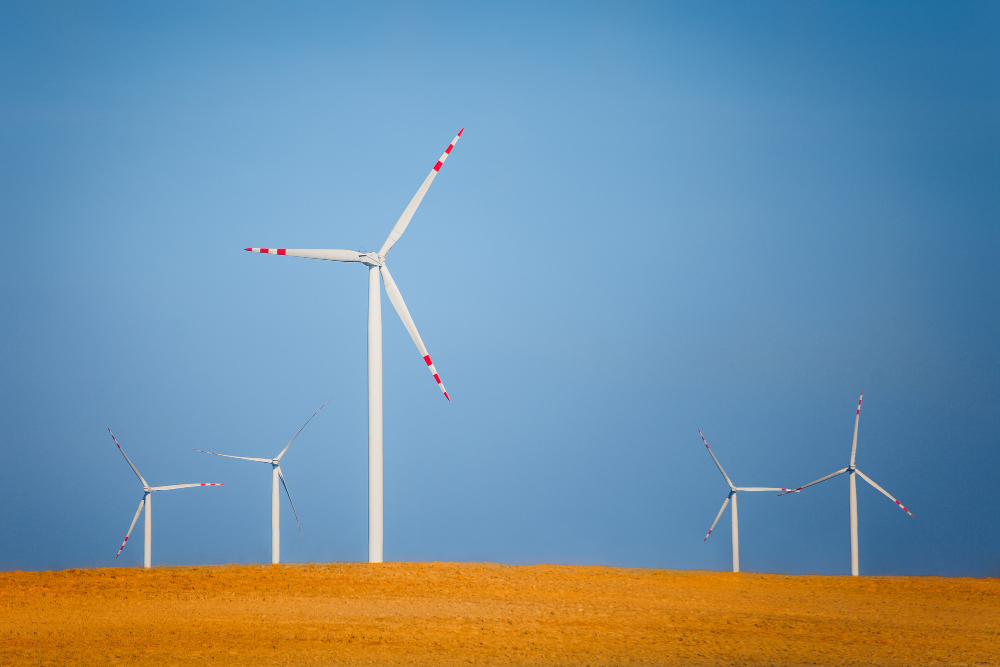Rajasthan, known for its vast desert landscapes and abundant sunshine, is taking significant steps towards becoming a clean energy powerhouse in India. The state has set an ambitious goal of achieving 90 GW (gigawatts) of clean energy by 2030, with solar and wind energy leading the way. This move not only aligns with India’s broader renewable energy goals but also positions Rajasthan as a leader in the global transition to sustainable energy sources. Let’s explore how Rajasthan is harnessing its natural resources to meet this ambitious target and the impact it will have on the state and the country.
Why Rajasthan is Perfect for Solar and Wind Energy
Rajasthan is geographically well-positioned to become a hub for clean energy. With its expansive desert regions, the state receives some of the highest solar radiation in India. On average, Rajasthan gets over 300 sunny days each year, making it ideal for large-scale solar energy projects.
In addition to solar energy, Rajasthan’s wind potential is also significant. The western part of the state experiences strong winds, which are perfect for wind energy generation. With the combined potential of solar and wind energy, Rajasthan is uniquely placed to meet its clean energy targets.
The 90 GW Target: A Bold Step Towards Sustainability
Setting a target of 90 GW of clean energy by 2030 is a bold step. It reflects the state’s commitment to reducing its reliance on traditional fossil fuels and transitioning towards sustainable energy. This target aligns with India’s broader goals of reaching 500 GW of non-fossil fuel energy capacity by 2030. Rajasthan’s contribution will play a crucial role in helping the country meet its international climate commitments under the Paris Agreement.
Out of the 90 GW, a major share will come from solar energy, with an estimated 65 GW expected to be generated from solar projects. Wind energy will contribute around 25 GW. These figures highlight the importance of both solar and wind energy in Rajasthan’s clean energy strategy.
Solar Energy Leading the Way
Solar energy is at the forefront of Rajasthan’s clean energy push. With projects like the Bhadla Solar Park, which is currently the world’s largest solar park, Rajasthan has already demonstrated its capacity for large-scale solar energy production. The Bhadla Solar Park alone has a capacity of over 2.2 GW, and more solar parks are being developed across the state to meet the growing demand for renewable energy.
The state government has also introduced favorable policies to attract investment in solar energy projects. These policies include offering land for solar projects at competitive rates, providing financial incentives to developers, and simplifying the process of obtaining permits and approvals. Such initiatives are crucial in ensuring that Rajasthan achieves its solar energy targets.
Wind Energy: A Key Contributor
While solar energy dominates Rajasthan’s clean energy landscape, wind energy is also playing a crucial role. The Thar Desert and other regions in western Rajasthan have the potential to generate substantial wind energy. The state government has identified several areas for wind farm development and is working with both public and private players to harness this potential.
Wind energy is particularly important because it complements solar energy. While solar energy is generated during the day, wind energy can be produced at different times, helping to balance the energy grid and ensure a consistent supply of electricity.
The Economic and Environmental Benefits
Achieving 90 GW of clean energy by 2030 will bring significant economic and environmental benefits to Rajasthan. The state’s focus on renewable energy will create thousands of new jobs, particularly in rural areas where solar and wind farms are located. From construction and installation to maintenance and operations, the renewable energy sector offers a wide range of employment opportunities for local communities.
In terms of environmental benefits, transitioning to clean energy will help reduce Rajasthan’s carbon footprint and decrease its reliance on coal and other fossil fuels. This will lead to a significant reduction in greenhouse gas emissions, contributing to India’s overall efforts to combat climate change. The shift to renewable energy will also improve air quality and reduce pollution levels in the state, leading to better public health outcomes.
Overcoming Challenges
While Rajasthan’s clean energy ambitions are impressive, there are challenges that need to be addressed. One of the key challenges is the need for a robust infrastructure to transmit the electricity generated by solar and wind farms to other parts of the country. The development of transmission lines and grid infrastructure is essential to ensure that the energy produced in Rajasthan can be efficiently distributed.
Another challenge is the availability of land for large-scale solar and wind projects. While Rajasthan has vast desert areas, land acquisition can be a complex and time-consuming process. Ensuring that local communities benefit from clean energy projects and addressing concerns related to land use will be critical for the success of the state’s renewable energy program.
The Road Ahead
Rajasthan’s target of 90 GW of clean energy by 2030 is an ambitious and achievable goal. With solar and wind energy leading the way, the state is well on its way to becoming a global leader in renewable energy. The government’s supportive policies, combined with Rajasthan’s natural advantages, make it a prime location for clean energy investment.
Conclusion
Rajasthan’s focus on achieving 90 GW of clean energy by 2030 is a testament to the state’s commitment to sustainability. With its abundant solar and wind resources, favorable government policies, and growing investment in renewable energy, Rajasthan is poised to lead the way in India’s clean energy revolution. The economic, environmental, and social benefits of this transition will have a lasting impact on the state, its people, and the planet.





